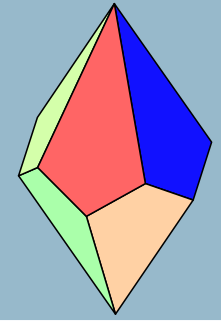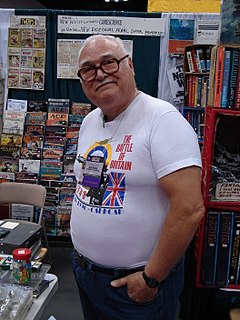 W
WDice are small, throwable objects with marked sides that can rest in multiple positions. They are used for generating random numbers, commonly as part of tabletop games, including dice games, board games, role-playing games, and games of chance.
 W
WAstragalomancy, also known as astragyromancy, is a form of divination that uses dice specially marked with letters or numbers.
 W
WThe Dice Man, a 1971 novel by career English professor George Cockcroft tells the story of a psychiatrist who makes daily decisions based on the casting of a die. Cockcroft describes the origin of the title idea variously in interviews, once recalling a college "quirk" he and friends used to decide "what they were going to do that night" based on a die-roll, or sometimes to decide between mildly mischievous pranks. The Hitchhiker's Guide to the Galaxy user site describes the novel as a book that was viewed as subversive, as having "anti-psychiatry sentiment", and as "reflecting the mood of the early 1970s in permissiveness". It has content that includes the protagonist's decisions to engage in rape and murder, and is described as having been "banned in several countries".
 W
WA dice tower is a tool used by gamers to roll dice fairly. Dice are dropped into the top of the tower, and bounce off of various hidden platforms inside it before emerging from the front. Dice towers eliminate some methods of cheating which may be performed when rolling dice by hand. There are many forms of towers and they vary in construction and design.
 W
WDiceware is a method for creating passphrases, passwords, and other cryptographic variables using ordinary dice as a hardware random number generator. For each word in the passphrase, five rolls of a six-sided die are required. The numbers from 1 to 6 that come up in the rolls are assembled as a five-digit number, e.g. 43146. That number is then used to look up a word in a word list. In the English list 43146 corresponds to munch. By generating several words in sequence, a lengthy passphrase can be constructed.
 W
WFour-sided dice, abbreviated d4, are often used in tabletop role-playing games to obtain random integers in the range 1–4. Two forms exist of this die: a tetrahedron with four equilateral triangle-shaped faces, and an elongated long die with four faces. The latter type does not roll well and is thus usually thrown into the air or shaken in a box.
 W
WFuzzy dice, also known as fluffy dice, soft dice, or stuffed dice, are an automotive decoration consisting of two oversized plush dice which hang from the rear-view mirror. The original fuzzy dice, first used in the 1950s, were white and approximately 3 inches (8 cm) across. Nowadays, fuzzy dice come in many colors and various sizes. In Britain and other parts of the world it is considered kitsch to display such items in a car.
 W
WLong dice are dice, often roughly right prisms, designed to land on any of several marked lateral faces, but not either end. Landing on end may be rendered very rare simply by their small size relative to the faces, by the instability implicit in the height of the dice, and by rolling the long dice along their axes rather than tossing. Many long dice provide further insurance against landing on end by giving the ends a rounded or peaked shape, rendering such an outcome physically impossible.
 W
WMiwin's Dice are a set of nontransitive dice invented in 1975 by the physicist Michael Winkelmann. They consist of three different dice with faces bearing numbers from 1 to 9; opposite faces sum to 9, 10, or 11. The numbers on each die give the sum of 30 and have an arithmetic mean of 5.
 W
WThe pentagonal trapezohedron or deltohedron is the third in an infinite series of face-transitive polyhedra which are dual polyhedra to the antiprisms. It has ten faces which are congruent kites.
 W
WQ WORKSHOP is a Polish company located in Poznań that specializes in design and production of polyhedral dice and dice accessories for use in various games. They also run an online retail store and maintain an active social media community.
 W
WSex dice is a dice game intended to heighten the sexual atmosphere and promote foreplay. Instead of numbers, each face on the dice contains the name of a body part; the body part that faces up when the die is rolled must then be given sexual attention. The Daily Princetonian suggests rolling sex dice to "break the ice and extend [one's] foreplay." The University Daily Kansan advises a roll of the sex dice for those who are not particularly limber as a means to "bring variety to [one's] bedroom romps."
 W
WSicherman dice are the only pair of 6-sided dice that are not normal dice, bear only positive integers, and have the same probability distribution for the sum as normal dice.
 W
WLouis Zocchi, Technical Sergeant, USAF (retired), is a gaming hobbyist, former game distributor and publisher, and maker and seller of polyhedral game dice. In 1986, he was elected to the Charles Roberts Awards Hall of Fame.
 W
WZocchihedron is the trademark of a 100-sided die invented by Lou Zocchi, which debuted in 1985. Rather than being a polyhedron, it is more like a ball with 100 flattened planes. It is sometimes called "Zocchi's Golfball".